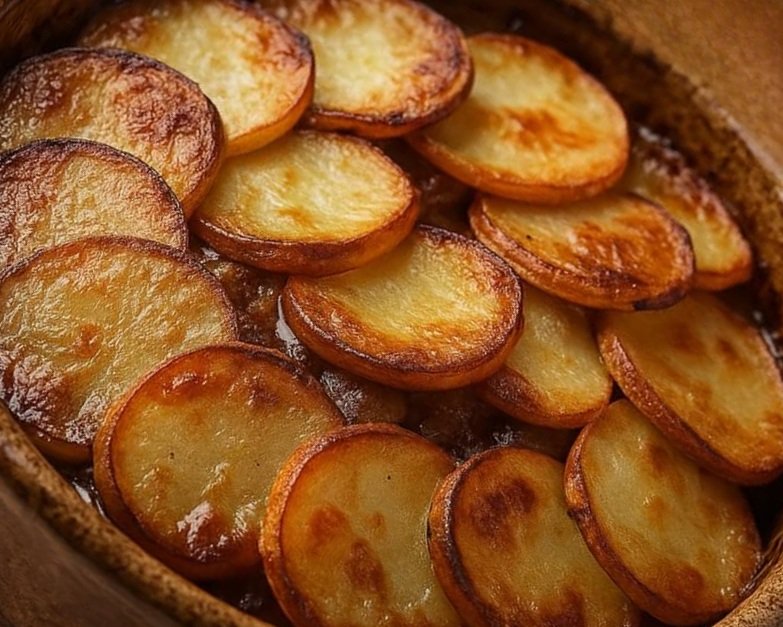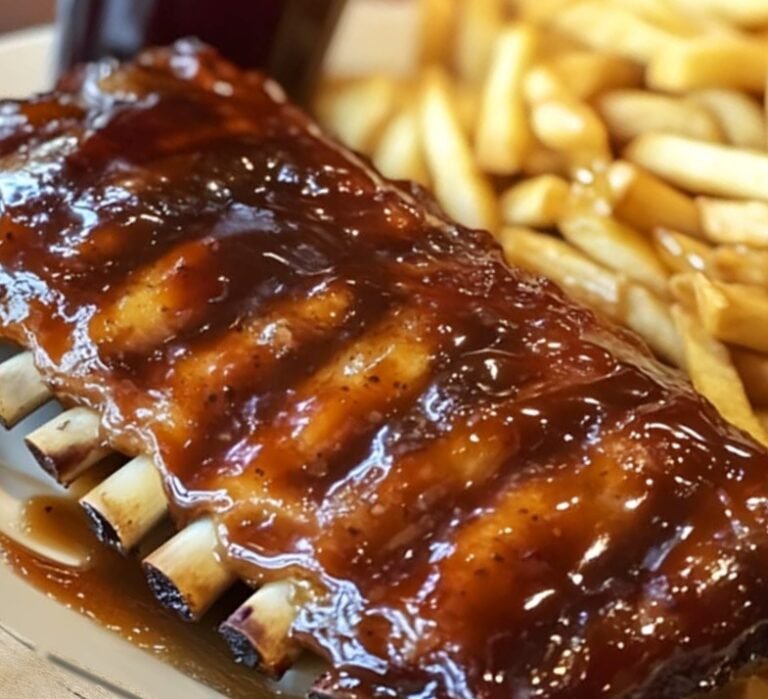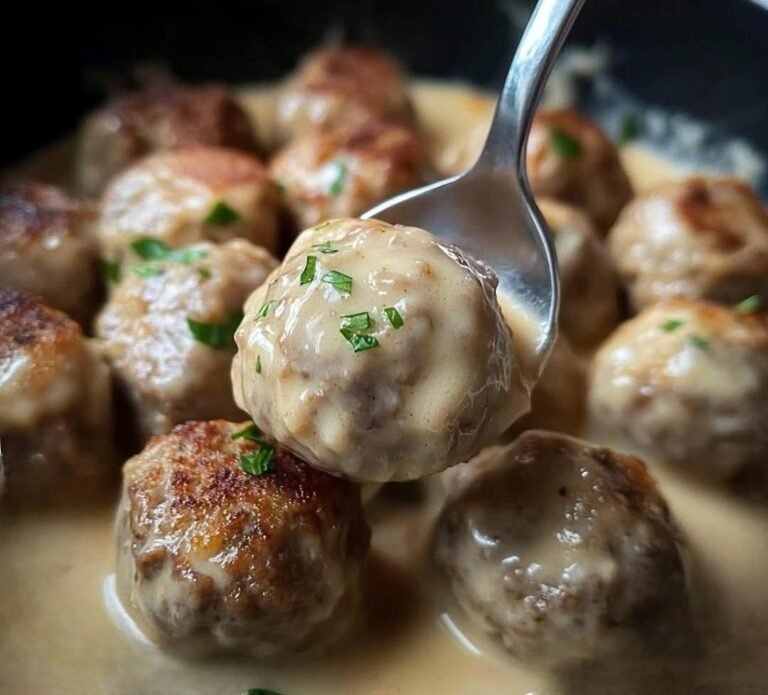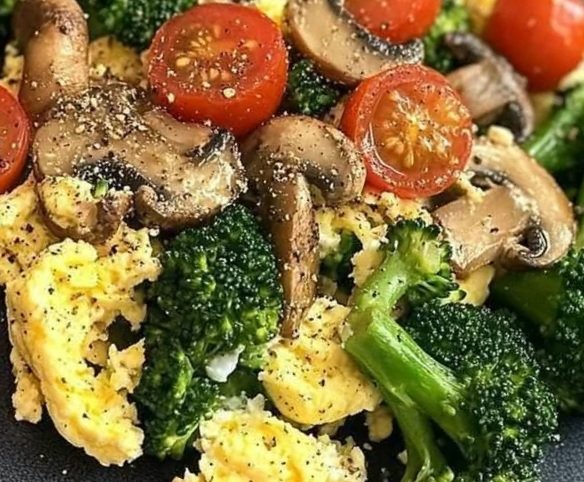Traditional Lancashire Hotpot: A Hearty British Classic

Lancashire Hotpot is a timeless dish hailing from the northwest of England, particularly associated with the county of Lancashire. This comforting, one-pot meal is a celebration of simple, wholesome ingredients—tender lamb or mutton, onions, carrots, and potatoes—slowly baked to create a rich, flavorful stew topped with crispy, golden potato slices. Historically a working-class dish, it was designed to make the most of affordable cuts of meat and basic vegetables, transforming them into a warming, satisfying meal that’s perfect for chilly evenings. Our version stays true to its roots but includes optional steps and tips to elevate the dish for modern cooks, ensuring a delightful balance of rustic charm and hearty flavor.
This recipe serves 4–6 people and is ideal for a cozy family dinner or a gathering with friends. The slow cooking process melds the flavors together, while the layered potatoes develop a beautifully crisp top, making it a true crowd-pleaser. Below, you’ll find a detailed guide to preparing this classic dish, along with tips to customize it to your taste.
Ingredients (Serves 4–6)
- 600g lamb or mutton (shoulder or neck recommended): Cut into bite-sized chunks for tender, melt-in-the-mouth results. Shoulder or neck cuts are ideal due to their balance of meat and fat, which adds depth to the dish.
- 2 medium onions: Thinly sliced to provide a sweet, savory base that complements the richness of the lamb.
- 3 medium carrots (optional): Sliced into rounds for a touch of sweetness and color, though traditional recipes sometimes omit them.
- 800g potatoes: Choose a starchy variety like Maris Piper or Russet, peeled and thinly sliced to create the iconic layered top.
- 500ml lamb or beef stock: Use a high-quality stock (homemade or store-bought) to enhance the dish’s depth of flavor.
- 2 tablespoons all-purpose flour: Helps thicken the sauce for a hearty, cohesive stew.
- 2 tablespoons butter or beef dripping: Adds richness; dripping is traditional, but butter works beautifully.
- Salt and freshly ground black pepper: Season generously to bring out the natural flavors.
- Fresh thyme or 1–2 bay leaves (optional): A sprig of thyme or a bay leaf infuses subtle herbal notes, though purists may skip this for simplicity.
Equipment Needed
- A large, heavy-bottomed frying pan or skillet (for browning, if desired)
- A deep ovenproof casserole dish with a lid (or use foil)
- A sharp knife or mandoline for thinly slicing potatoes
- An oven preheated to 170°C (340°F)
Preparation Instructions
- Get Started with the Oven
Preheat your oven to 170°C (340°F, or 150°C for fan ovens). This low-and-slow cooking temperature ensures the lamb becomes tender and the flavors meld perfectly. - Optional: Brown the Lamb
For an extra layer of flavor, heat a tablespoon of butter or dripping in a large frying pan over medium-high heat. Pat the lamb chunks dry with a paper towel, then sear them in batches until golden brown on all sides, about 2–3 minutes per side. This step caramelizes the meat, enhancing the dish’s depth. Once browned, transfer the lamb to a plate and set aside. If you’re short on time, you can skip this step—the hotpot will still be delicious. - Optional: Cook the Onions
In the same pan, add another teaspoon of butter or dripping if needed and sauté the sliced onions over medium heat for 5–7 minutes until soft and translucent. Stir in the 2 tablespoons of flour and cook for 1–2 minutes, stirring constantly, to create a light roux. This helps thicken the stock later, giving the hotpot a rich, cohesive texture. Set the onions aside. If skipping this step, simply layer the raw onions with the meat. - Assemble the Hotpot
In a deep ovenproof casserole dish, begin layering the ingredients:
- Bottom layer: Arrange half of the potato slices in an overlapping pattern to cover the base of the dish. This creates a sturdy foundation.
- Middle layers: Add the browned lamb (or raw, if not browning), onions, and carrots (if using), spreading them evenly. Season generously with salt and black pepper. If using thyme or bay leaves, tuck them in here for a subtle aromatic touch.
- Top layer: Finish with the remaining potato slices, arranging them neatly in an overlapping pattern like shingles. This top layer will crisp up beautifully in the oven, creating the hotpot’s signature texture.
- Add the Stock
Gently pour the lamb or beef stock over the layers until it just reaches the top of the meat and vegetable layer (you may not need all 500ml, depending on your dish size). Be careful not to cover the top potato layer, as it should stay exposed to crisp up during baking. The stock will simmer and infuse the dish with flavor as it cooks. - Butter It Up
Dot the top layer of potatoes with small pieces of the remaining butter or dripping. This adds richness and helps the potatoes turn golden and crispy. - Bake Covered
Cover the casserole dish with a tight-fitting lid or a double layer of aluminum foil to trap the steam, which helps tenderize the meat. Place the dish in the preheated oven and bake for 1.5 hours. The low temperature allows the flavors to meld slowly, creating a melt-in-the-mouth texture. - Crisp the Top
After 1.5 hours, remove the lid or foil and return the dish to the oven for an additional 30–45 minutes. This step allows the top layer of potatoes to turn golden brown and crispy, while the stock reduces slightly, intensifying the flavor. Check for doneness: the lamb should be tender, and the potatoes should be crisp on top and soft underneath.
Serving Suggestions
- Serve hot: Spoon the hotpot into bowls, ensuring each portion has a mix of tender meat, vegetables, and crispy potatoes. The rich, savory broth ties it all together.
- Accompaniments: Traditionally, Lancashire Hotpot is served with simple sides like pickled red cabbage, beetroot, or a crusty loaf of bread to soak up the juices. A side of steamed greens, such as kale or green beans, adds a fresh contrast.
- Drinks: Pair with a robust red wine, a hearty ale, or a non-alcoholic option like sparkling water with a splash of lemon for a refreshing balance.
Tips for Success
- Choosing the meat: Lamb or mutton shoulder or neck is ideal for their fat content, which keeps the dish moist and flavorful. If using leaner cuts, consider adding a bit more butter or dripping to compensate.
- Potato slicing: Aim for thin, uniform potato slices (about 2–3mm thick) to ensure even cooking and a crispy top. A mandoline slicer can make this easier.
- Make it your own: While carrots are optional, they add a touch of sweetness. You could also experiment with adding a splash of Worcestershire sauce to the stock for extra umami or a sprinkle of rosemary for a different herbal note.
- Make ahead: Lancashire Hotpot reheats beautifully and can be prepared a day in advance. Store it covered in the fridge, then reheat in the oven at 170°C until warmed through, about 20–30 minutes.
- Freezing: This dish freezes well. Cool completely, then store in an airtight container for up to 3 months. Thaw overnight in the fridge before reheating.
Why You’ll Love This Recipe
Lancashire Hotpot is the epitome of comfort food—simple to prepare, budget-friendly, and packed with flavor. The slow baking process transforms humble ingredients into a dish that’s greater than the sum of its parts, with tender meat, soft vegetables, and a crispy potato topping that’s irresistible. Whether you’re cooking for a family meal or a special occasion, this hotpot is sure to warm hearts and bellies. Plus, it’s a one-pot wonder, meaning less cleanup and more time to enjoy the meal!





